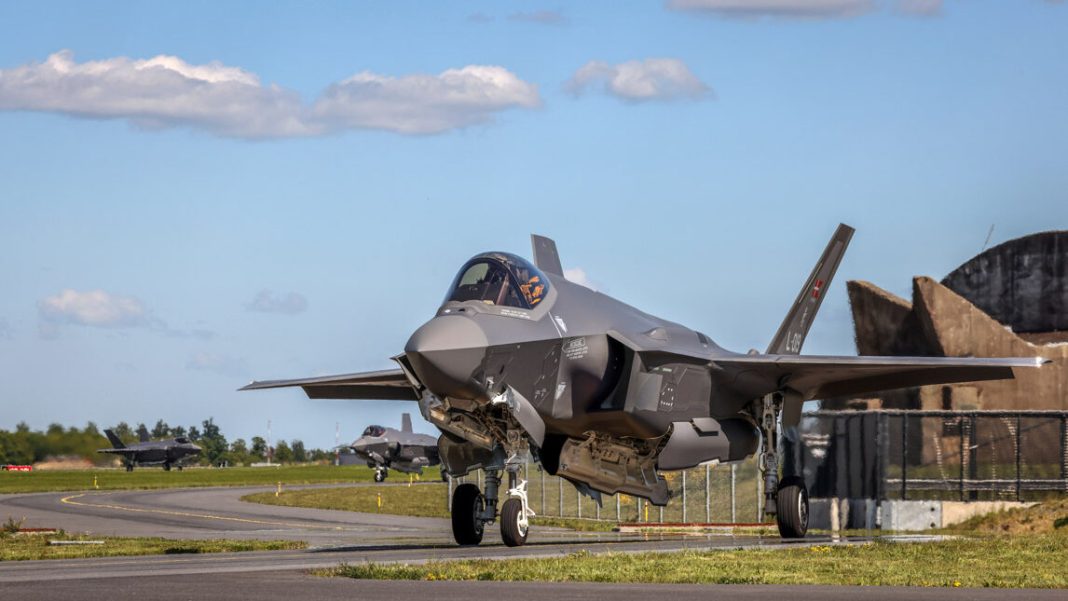Denmark’s top defense company, Terma, has entered into a new partnership with Ukraine’s tech firm Odd Systems to jointly develop an affordable AI-powered air defense system. Officials announced the partnership on July 21, marking a significant move in international defense cooperation during the ongoing regional conflict.
Terma Joins Ukrainian Tech Firm to Build AI Defense Systems
Terma produces specialized pylons for F-16 fighter jets, many of which defense partners are now delivering to Ukraine. The Danish company is also a major contributor to the F-35 fighter jet program, supplying over 80 crucial parts, including radar components, pylons, and fuselage elements.
The new partnership aims to combine Terma’s advanced radar and sensor systems with Odd Systems’ combat-proven drone platforms. The result is a system designed to detect, track, and intercept enemy drones autonomously using artificial intelligence.
Odd Systems, a Ukrainian technology firm, has been developing drone-based interception tools. The company also develops Kurbas thermal imaging cameras and the Horska-12 interceptor drone, which may serve as a key element in this joint system.
AI Meets Battlefield: Detecting and Destroying Drones
According to reports from Defense Express, the joint air defense system will rely heavily on AI to improve detection and response speed. The system uses artificial intelligence to identify a wide range of aerial threats—including FPV drones, commercial quadcopters like the Mavic, and long-range surveillance drones—and neutralizes them in real-time.
Although Terma and Odd Systems have not disclosed the full list of technologies, Terma has confirmed that it will provide advanced sensor technologies and situational awareness systems. These tools enable the system to detect even small and fast-moving aerial targets with high accuracy.
Machine Learning and Artificial Intelligence is the New Trend at Standford Policy Lab
Odd Systems developed the Horska-12 drone platform, which is likely to serve as a key component in physically intercepting and destroying hostile drones. These UAVs, already tested in combat conditions, can function as “effectors”—meaning they carry out the task of destroying the enemy drones once identified.
The project is described as a “complex” solution, which typically refers to layered systems combining multiple tools like radar, sensors, and UAVs. Terma’s experience in radar systems—used both on land and sea—is likely to play a significant role in this layered setup, especially in guiding drones to intercept targets with precision.
Joint Terma-Odd Systems Engineering Focuses on Drone Interception
Unlike some partnerships that focus only on integrating ready-made systems, this new alliance between Terma and Odd Systems will involve joint engineering from the ground up. Terma has already begun hiring specialized engineers to work on the project, highlighting the depth of collaboration involved.
This approach ensures that both companies contribute equally, combining Western defense technology with Ukrainian battlefield experience. Such joint development helps create solutions that are more adaptive to real-world conditions, especially in high-conflict areas like Ukraine.
The partnership reflects a broader trend where international companies are teaming up with local firms to produce tools designed for modern warfare, particularly against unmanned aerial threats. Although officials have not revealed a timeline or final system design, both sides have demonstrated a serious commitment through the early development phase.
🔥 Zelenograd on fire: 93 Ukrainian drones hit residential area, flights diverted from Moscow
Notably, Ukraine previously signed an agreement with Swift Beat, a secretive U.S.-based drone tech company. That deal focused on producing AI-powered UAVs for the Ukrainian military, which shows Ukraine’s growing reliance on autonomous systems for defense operations.
With Terma’s proven experience in supporting fifth-generation aircraft, and Odd Systems’ growing expertise in combat drones, the collaboration sets the stage for a new generation of smart, affordable, and effective air defense tools. While it’s still in its development phase, the project has already gained attention as a milestone in international defense cooperation.

